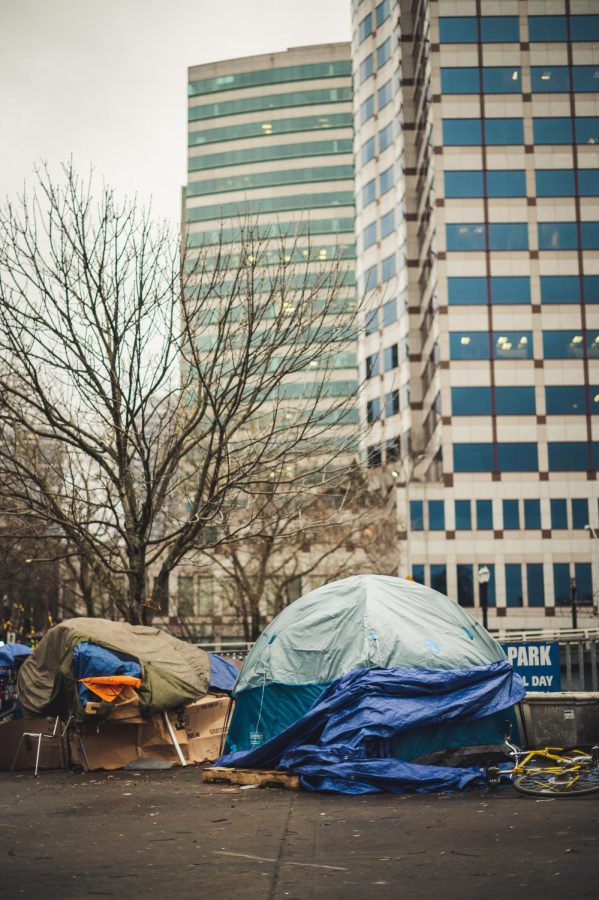If we collectively believed that tents were “beautiful”, anti-homeless architecture wouldn’t exist.
June 1, 2022
We find cars, skyscrapers and bridges to be appealing, so why not tents?
Anti-homeless architecture, also known as “hostile” architecture, is implemented in many cities to create an unwelcome environment for people that have no other safe options than to rest in public areas. According to Karl Persson de Fine Licht, “hostile” architecture is also known as “defensive” architecture.
According to Karl Persson de Fine Licht at Etikk i Praksis: Nordic Journal of Applied Ethics, “This type of architecture is called “defensive” or “hostile” architecture and includes benches that cannot be slept on, spikes in the ground that cannot be stood on, and pieces of metal that hinder one’s ability to skateboard.” More than anything, these architectural designs have led to human rights issues, especially in the eyes of the public.
In a capitalist society, we are born to make money. Whether that be for ourselves, or for greedy corporations, our personal value is tied directly to our bank accounts.
Houseless people are seen as a burden in our country, because they appear to have less capital, and reside on land that isn’t their own, which is ironic. Much like tiny homes, living in vans and trying to survive in nature “just for fun,” gentrification is a major reason for the stigmatization of houseless people.
According to Willy Staley at the New York Times, gentrification has evolved from a housing crisis to a lifestyle crisis.
“The root of gentrification, ‘gentry’, can refer either to those of not-quite-aristocratic birth or to those that profit from land-ownership; either to the well-off in general or to the rentier class in particular,” Staley states.
Those of the “rentier” class profit from owning real estate or having investments. Examples of groups that fall into this classification are landlords, stock-holders and even vacation rental owners.
The appropriation of houselessness culture has led to lifestyle gentrification. There is so much emphasis in our society on trends, many people fail to understand or realize that glamorizing impoverished people’s struggles also silences said struggles. The choice of living in a van is not the same as having to live in a van.
According to Kaitlin Jock at Street Roots, “People facing homelessness in many cities throughout the United States often feel safer spending a night in open public space than they do in shelters, but design policy forces people to reevaluate where they will spend the night.”
There are practically no friendly spaces for homeless people and glorifying the struggles of homeless people only leads to further struggles in the homeless community. We see this in the “inclusive architecture” in Philadelphia’s Love Park (Jock, 2019).
As Kaitlin Jock states in her article, the “inclusive” architecture is not inclusive at all. The city of Philadelphia implemented a take on modern art into their use of hostile architecture.
The Philadelphia Inquirer expresses Philadelphians having issues with the city misleading the public about what the Love Park renovations were truly for. For example, the new benches having arm rests spaced conveniently in a way that no person could comfortably lay down and rest on the benches.
According to the Philadelphia Inquirer, the tax-payers in Philadelphia paid $26million toward Love Park renovations. According to Kaitlin Jock, many cities, including Seattle, San Francisco and New York City have also implemented hostile or defensive architecture.
Not only do these changes to the public spaces seem to be wasteful economically, a more effective solution to the homeless crisis would be funding programs for homeless people.
While the change of heart regarding the attractiveness of tents, and materialistic concepts in general, is a temporary solution to some of the struggles the homeless population faces, it is still worth considering in the eyes of our society.


